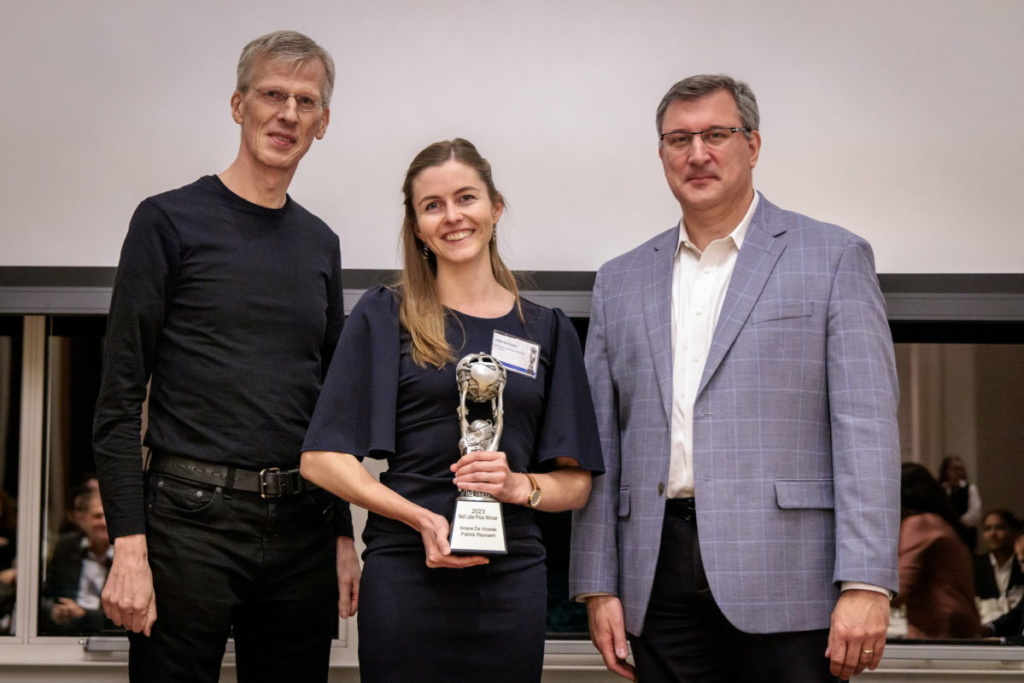Your cart is currently empty!
Willy Sansen (1943-2024): a true professor has passed away
KU Leuven’s MICAS chip design research group mourns the death of its founder and beacon, Willy Sansen.
Our founder and shining example, Willy Sansen, passed away on 25 April 2024. He was a beacon in analog IC design research and education for the past fifty years. He was a true professor: a researcher and an educator.

Willy Sansen, the researcher
Sansen’s research can be summarized as enabling systematic analog circuit design in a digital, CMOS-dominated, world. And that in all its aspects. He’s shown how to start a design from transistor-level models, founded in solid-state physics, move on to larger building blocks like opamps or OTAs, and finally end up in fully integrated analog systems, such as filters, AD-DA converters and all other kinds of analog signal processing blocks. Sansen was one of the founders of this systematic approach, which is now standard practice.
In the early days, Sansen complemented this with analog CAD work. In the eighties, a time when almost all design went digital, he kept investing in analog research. Already back then, his vision was that the more accurate and high-performant the digital processors become, the more accurate and high-bandwidth analog signals will be needed. A vision that materialized in the last decades.
Sansen enjoyed all kinds of analog circuits, but he definitely had a fascination for the analysis of nonlinear distortion. Nonlinear distortion already played a role in his PhD, which he obtained in 1972 at UC Berkeley in California with Bob Meyer as adviser. Later, he studied harmonic and intermodulation distortion in nearly every circuit you can think of. His love for music, being a gifted player of the clarinet himself, was probably rooted in the same grounds: distortion and harmonics are key to creating a balanced sound.
While analog building blocks and their systematic design are definitely the central themes in his research, Sansen also cared for the relevance and application of analog circuits. That’s where the love of biomedical electronic systems undoubtedly came from. Willy was the driving force behind the design of an early platform for a biomedical measurement and stimulation system: the Internal Human Condition System (IHCS). He was broadminded enough to incorporate the digital innovations of those days on it: a microprocessor! Sansen also was a pioneer in the development of fully integrated stimulation drivers for the first cochlear implants.
Willy Sansen, the educator
Sansen was a gifted teacher. Anyone who ever attended one of his classroom lectures or one of his conference speeches will forever remember it. His charismatic style was fascinating and inspiring. For the content of his classes, as for his research, “systematic” is also the keyword. Sansen understood the art of building concepts that students initially experience as difficult – circuit stability is a good example – from the ground up, highlighting the basic principles and gradually increasing the complexity. At the end of the road, as a student or attendee, you just saw the light!
His talent and drive for education have culminated in the book “Analog design essentials,” most probably the bible for many generations of analog circuit designers to come. It’s less known that this actually was his second book. The first one, entitled “Design of analog integrated circuits and systems,” was co-authored with Kenneth Laker. It had a somewhat more system-level focus, but it’s also a classic. It first introduced the pole-zero position plots that Sansen came up with to explain the frequency behavior of analog circuits as a function of several design parameters.
Willy was also innovative when it came to educational technology. Decades before the pandemic forced everyone to record classes, he already made his courses available on videotape. Sansen was teaching at KU Leuven, Belgium, from 1972 till he became an emeritus professor in 2008. But he wasn’t only teaching on the home front; he must have flown many times around the globe to visit universities and companies almost everywhere on Earth to educate and inspire students and start engineers in analog circuit design.
Willy Sansen on the international stage
Sansen has always been playing at the international level. His Berkeley PhD laid the foundations for a global network. Throughout the years, he was a visiting professor in Philadelphia (USA), Ulm, Villach and Munich (all Germany). He’s been on the technical committees of many conferences. In 2002, he became the first European program chair of the International Solid-State Circuits Conference (ISSCC), the most prestigious conference in IC design. Later on, in 2008-2009, he served as the first European president of the IEEE Solid-State Circuits Society (SSCS).
Willy received many awards and honors in his career, both from academy and industry. The most distinctive one, and the one he was most proud of, is the 2011 IEEE SSCS Donald O. Pederson Solid-State Circuits Award.
Willy Sansen’s legacy
Sansen retired from active duty at KU Leuven in 2008, having supervised 65 PhD theses and having (co)authored more than 650 papers and 16 books. He left behind a well-established research group: MICAS (Microelectronics and Sensors). The group today consists of six full-time professors and more than fifty PhD students, who focus on the topics that Willy spent investigating throughout his entire career: analog and mixed-signal integrated circuit design, analog CAD methodologies, RF and microwave circuit design. Even digital design found its way into the group, always with a focus on circuit design and implementation, our core business. It should also be mentioned that Sansen played an active role in the creation of six spinoff companies in his career.
It’s our challenge to maintain and further develop the high standards set by Willy Sansen and let him live on in our ever-continuing research toward integrated “circuits for a better life.” But, at this moment, our thoughts are with Willy’s family, his daughters and his grandchildren. We want to offer them our most sincere condolences.


